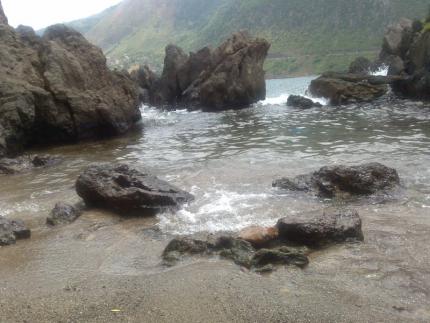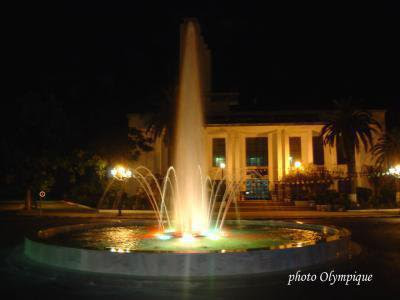wlcome to algeria
Algeria  i/ælˈdʒɪəriə/ (Arabic: الجزائر, al-Jazā'ir; Berber: ⴷⵣⴰⵢⴻⵔ Dzayer), officially the People's Democratic Republic of Algeria (الجمهورية الجزائرية الديمقراطية الشعبية, Al-Jumhūriyyah Al-Jazāʾiriyyah Ad-Dīmuqrāṭiyyah Ash-Shaʿbiyyah),[note 1] also formally referred to as the Democratic and Popular Algerian Republic, is a country in the Maghreb region of Africa, with Algiers as its capital and most populous city.
i/ælˈdʒɪəriə/ (Arabic: الجزائر, al-Jazā'ir; Berber: ⴷⵣⴰⵢⴻⵔ Dzayer), officially the People's Democratic Republic of Algeria (الجمهورية الجزائرية الديمقراطية الشعبية, Al-Jumhūriyyah Al-Jazāʾiriyyah Ad-Dīmuqrāṭiyyah Ash-Shaʿbiyyah),[note 1] also formally referred to as the Democratic and Popular Algerian Republic, is a country in the Maghreb region of Africa, with Algiers as its capital and most populous city.
Algeria old currency
this is some picture about old currency in algerie

Some images of the Algerian war 1954-1962
The conflict in Algeria erupted almost exactly 50 years ago. It was an ugly war that – regardless how hard it might sound in our times – dominated European media to almost the same extent as Vietnam War would only ten years later, or the war in Iraq does today. The Algerian War had many unusual features. It was a three- and eventually four-cornered contest between the French government, the European colonists and the Algerian nationalists, as well as General Charles de Gaulle, all pursuing different aims. It left Algeria and France deeply scarred, and the French Army at the breaking point: it destroyed the Fourth Republic and hundreds of thousands of lives and careers, and it brought the French military to the verge of coup d’etat.
Ever since the French troops landed at Sidi Ferruch, in 1830, Algeria was by all purposes a colony: the majority of population were native Moslems, mainly Arabs and Berbers, but they were dominated by slightly over one million European settlers, known as “colons” or – more graphically – “pied noirs”, mainly of Spanish, Italian, Corsican, and Alsatian stock. Only a tiny minority of the Moslem population held French citizenship rights or significant property: some 75% of Moslems were illiterate, they suffered from chronic unemployment, poor health, and hunger. The colons farmed the best land, enjoyed a virtual monopoly of political power and imposed their own educational, economic and administrative structures upon the domestic population. Nevertheless, Algeria was not even a French protectorate: in 1848 it was outright absorbed into metropolitan France, and thereafter regarded as an integral part of the parent state. This decision was to create enormous problems for all involved parties, then, constitutionally, there was no room for Algeria to gain independence from France.







Algerian nationalism before 1950s was fragmented: dissatisfied Moslems had a variety of parties from which to choose – including the Algerian Communist Party, the religious and pan-Islamic Association des Ulemas, the nationalistic Mouvement pur le Triomphe des Libertés Démocratiques (MTLD), or the liberal Islamist Union Démocratique du Manifesto Algéria (UDMA) – none of which was offering policies with universal appeal. In 1949 the MTLD split when Ben Bella created the more militant Organisation Spéciale (OS), a party dedicated to the use of violence. This did not attract widespread support either: although most of these parties attempted to participate in French political life, blatant electoral frauds by the colons prevented Moslem representation at all levels of government. The majority of pieds noirs, namely, were nothing less volatile, headstrong, violent and unforgiving than Moslems: they considered themselves as builders of Algeria and were fiercely determined to cling to what they had. Most of them considered any kind of compromise with Moslems as betrayal.
 The MTLD was one of the first nationalist Algerian organizations that became active. During the WWII, when the French were searching for volunteers between the Algerian population to help fight against Germans, many Algerian nationalists were given the promise that, if they would help in the war Algeria would be given independence in return. When the war ended, on 8 May 1945, and the Algerians understood that the French were not about to keep their word, the MTLD organized demonstrations in Setif, Batna Sedrata and Souk Ahras. Shoots fell and the situation then escalated, ending in riots during which 103 colons were killed. The reaction of the French authorities, but also the pied noirs, was fierce: in the ensuing revenge several thousands of Moslems were killed. Settlements inaccessible to the French Army – including some 40 different villages - were bombed by French Air Force SBD-5 Dauntless dive-bombers of 3F, flying from Algiers-Maison Blance.
The MTLD was one of the first nationalist Algerian organizations that became active. During the WWII, when the French were searching for volunteers between the Algerian population to help fight against Germans, many Algerian nationalists were given the promise that, if they would help in the war Algeria would be given independence in return. When the war ended, on 8 May 1945, and the Algerians understood that the French were not about to keep their word, the MTLD organized demonstrations in Setif, Batna Sedrata and Souk Ahras. Shoots fell and the situation then escalated, ending in riots during which 103 colons were killed. The reaction of the French authorities, but also the pied noirs, was fierce: in the ensuing revenge several thousands of Moslems were killed. Settlements inaccessible to the French Army – including some 40 different villages - were bombed by French Air Force SBD-5 Dauntless dive-bombers of 3F, flying from Algiers-Maison Blance.
 There was relative peace in the following years – but only on surface. Few French were aware of the hardships suffered by the indigenous population, about unemployment, rudimentary education (if at all), and poor medical facilities. To most of French people in Algeria it was fine to have Algerian Arabs working as menials on the farms or in the factories at wages none of them would consider on the mainland, or as domestic servants. But, any notion of integration on any other basis was not to be considered. In 1951, UDMA, MTLD, PCA, and Ulema leaders formed a common front, which was short-lived. In 1954 the MTLD-leader, Messali Hadj, formed the Mouvement Nationaliste Algérien (MNA): it was this organization that caused OS militants to create a force dedicated to armed revolt.
There was relative peace in the following years – but only on surface. Few French were aware of the hardships suffered by the indigenous population, about unemployment, rudimentary education (if at all), and poor medical facilities. To most of French people in Algeria it was fine to have Algerian Arabs working as menials on the farms or in the factories at wages none of them would consider on the mainland, or as domestic servants. But, any notion of integration on any other basis was not to be considered. In 1951, UDMA, MTLD, PCA, and Ulema leaders formed a common front, which was short-lived. In 1954 the MTLD-leader, Messali Hadj, formed the Mouvement Nationaliste Algérien (MNA): it was this organization that caused OS militants to create a force dedicated to armed revolt.




 09/091958
09/091958
some Photos celebrate victory




Algeria's most beautiful cities
Skikda
Skikda or Sakīkdah (Arabic: سكيكدة ) is a city in north eastern Algeria and a port on the Gulf of Stora, the ancient Sinus Numidicus. It was known as Philippeville until the end of the Algerian War of Independence in 1962. It is the capital of Skikda Province and Skikda District.
so nice city


TU A DES PHOTOS DE TA VILLE OU TON VILLAGE ?
SKIKDA





Bejaia
 |
| إضافة تسمية توضيحية |
















































